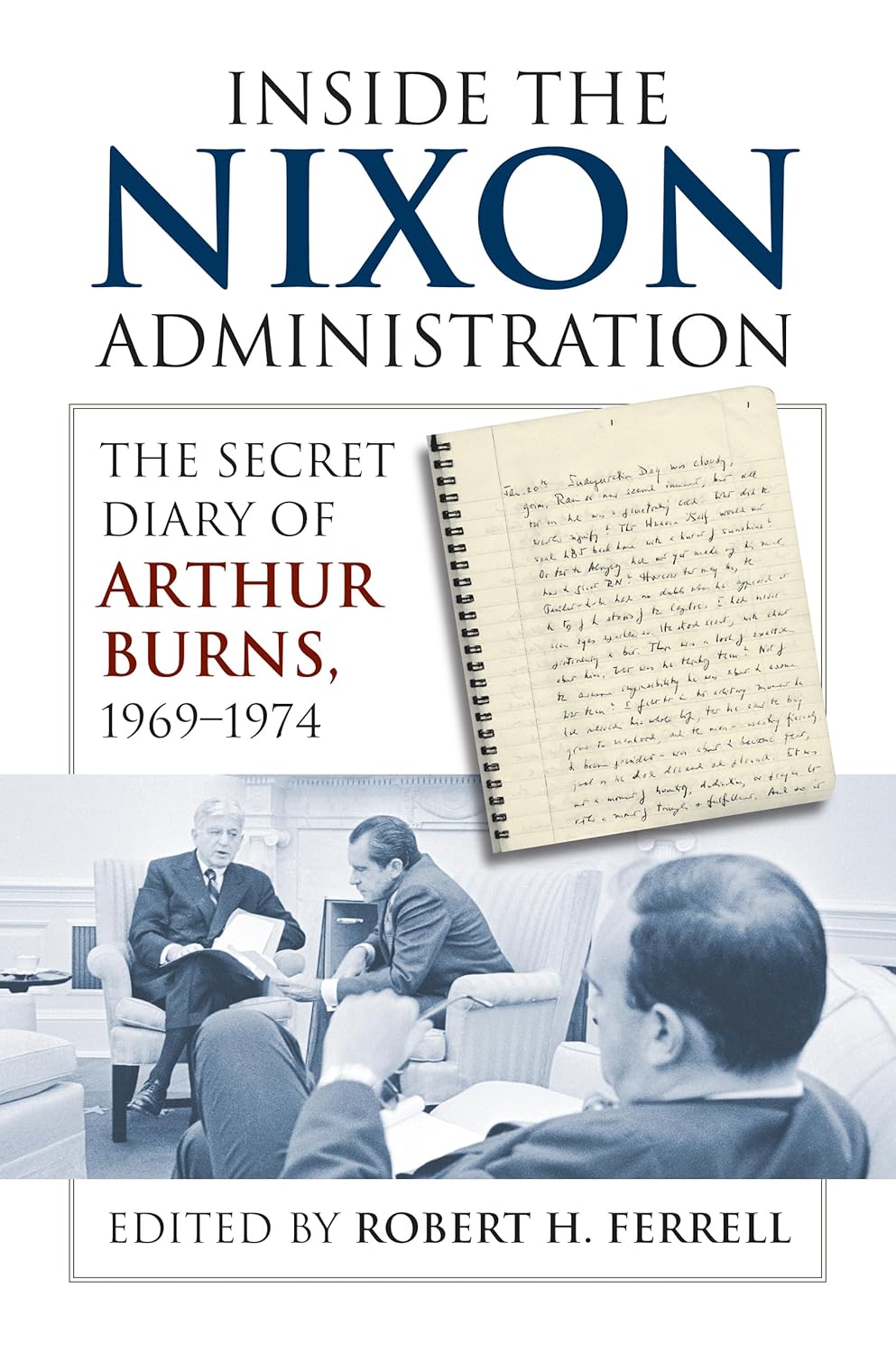This Week's Book: Arthur Burns and Nixon’s Fed Secrets
As I read biographies of entrepreneurs and investors, one time period keeps coming up, and I’m increasingly curious about it: the late 1960s through roughly 1982. Inflation skyrocketed to double digits, and interest rates reached nearly 20%. This period had a profound impact on the economy and society.
I shared a few weeks ago (see here) that I’m digging deeper into this period to understand what happened, why it happened, and what can be learned.
This week’s book, Inside the Nixon Administration, is the personal diary of the chairman of the Federal Reserve during most of this period, Arthur F. Burns. When I found it, I was excited about reading it because it contains the raw thoughts of the man setting monetary policy during this period, including about what he saw inside President Richard Nixon’s administration. No spin, no wordsmithing, none of that, which is rare in books. This diary was never meant to be viewed by others, so it’s truly a glimpse into the mind of the Fed chair at the time and into the real Nixon administration.
This book isn’t written like a story you can follow. It’s literally daily journal entries about what Burns was dealing with or thinking about that day. Even though it doesn’t flow like a nice story, what he shares is fascinating.
I learned why Nixon chose Burns as Fed chair: because he was a friend and advisor. They’d worked together in the Dwight D. Eisenhower administration, Nixon as vice president and Burns as chairman of the Council of Economic Advisers. It was also revealing to see how heavily involved Burns was in the Nixon administration. He regularly attended meetings in the White House and met with Nixon’s inner circle.
And it was interesting to see how the close relationship between Burns and Nixon allowed Nixon to influence monetary policy. The result wasn’t great—inflation and price controls. But what was more interesting to learn was what was most important to Nixon. He made employment a priority because it increased his odds of being reelected, even if that meant rising inflation.
Burns also candidly assessed several administration officials, including Paul Volcker, Henry Kissinger, George Shultz, and John Connally. The most interesting assessment was that of Richard Nixon. Burns began optimistic and holding him in high regard, but the more he worked with him and observed how he made decisions, the more his view of Nixon turned dour. By the end of the diary, Nixon and his circle were embroiled in the Watergate scandal, which Burns shared candid views about.
I’m glad I found this book. It gave me a valuable perspective on one of the most important men during this critical period in the country’s history.
If you’re interested in this period or the Nixon administration, consider reading Inside the Nixon Administration.




